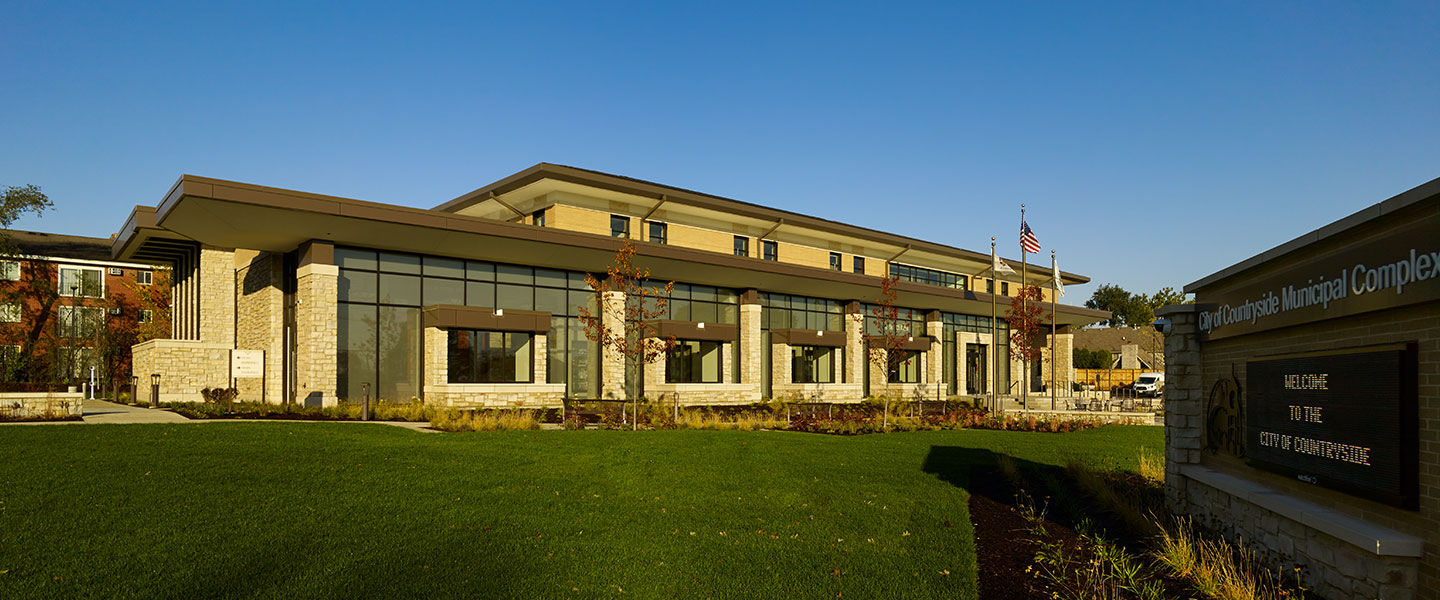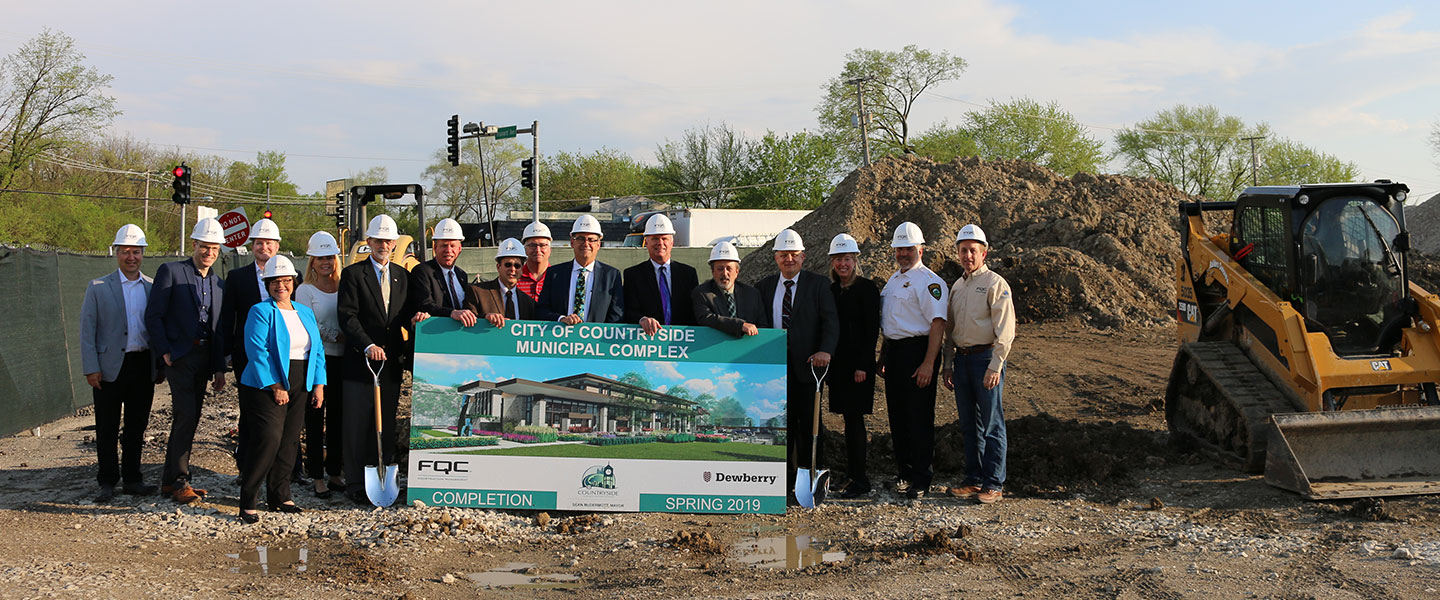As the first net zero energy designed municipal building in the state, the Countryside City Hall and Police Department is leading the way as an example of sustainable design and civic architecture for Illinois.

We integrate sustainable practices into our designs to add value to our clients and the communities where we live and work.
How does a building become net zero?
Air Barrier
For the highest impact on energy usage, we focused our design on the air barrier around the building. A precise building envelope design, which is two times tighter than current building code—paired with exceptionally efficient MEP systems—form
the basis for the low-energy strategy in Climate Zone 5.

As part of the grant the city received for the project, our team created two main areas of public education exhibits that demonstrate how the facility achieves net zero energy performance.
Thermal Envelope
The thermal envelope was equally important to address in the design. Through energy modeling, our team of architects and engineers tested multiple thermal values by increasing continuous insulation in the walls and roof for improved energy efficiency.
We also noticed notable areas of glazing in the design that could be improved by using different glass types and adding a ceramic frit pattern to the glass to reduce the building’s solar heat gain.
Lighting and Power
All of the rooms were designed with motion-sensor activated lights, however these won’t just turn back on with the wave of a hand. Someone in the room has to get up and press the button on the wall. This small change has shown a significant amount
of energy savings. This keeps the power off in cases where someone is running into the office to quickly grab something or just walking by an office door. There are also open workspaces where each work station controls the light above the desk. If
no one is working at that station, the light will be off, which helps save energy.
Another unique energy saving feature is that half the power outlets in the facility shut off after hours. This is an important feature since power outlets still draw power even when nothing is plugged into them.
Working Together to Teach Sustainable Practices
Through research and investigation, we learned about the Illinois Clean Energy Community Foundation and the $1 million grant it sponsors. We had three months to gather the information needed to apply for the grant, perform additional energy modeling,
and prove the design was going to work.
It was a big challenge to accomplish this in such a short amount of time, but so rewarding when our client received the grant. One of the reasons we were successful in getting the grant completed on time was our ability to have the designers, architects,
and consultants all under one roof, which made it a smooth transition to go from LEED Silver to net zero energy.

Photovoltaic arrays on the building’s roof and over the police vehicle carport areas will provide onsite renewable energy to balance power usage.
Future of Net Zero Design
This building will be a great resource to help educate the Countryside community and its visitors about sustainable features, inspiring them to make small changes in their own homes—like replacing lightbulbs with LED bulbs and using energy efficient
appliances.
I’m excited to see the future of net zero energy design. The Illinois Clean Energy Community Foundation has recently increased the value of its grant for net zero energy design to help bring sustainable buildings and education to other communities.

The ground breaking ceremony was held in May 2018. The building is expected to be complete in the summer of 2019.